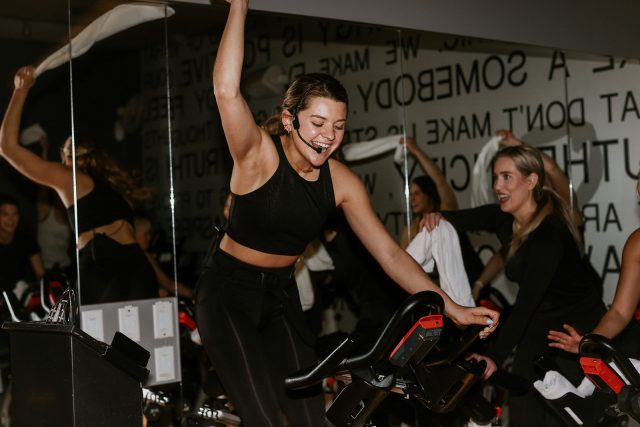HIIT Workouts: Why They’re Around to Stay
- By Dr. Jenni Bruning Brown
- October 20, 2015
HIIT Workouts: Why They’re around To Stay
High Intensity Interval Training (HIIT) is one of the most effective ways to pack-a-punch when in comes to working out. HIIT has been used by professional athletes and trainers for many years but is starting to show up in fitness studios and classes and is becoming the “it thing.” More than that, however, science has shown that HIIT has science to back it and that it’s here to stay.
Why is HIIT better than other workouts?
The evidence is in on HIIT, showing that it is one of the best workouts for improving cardiovascular health, with recent studies even indicating that short HIIT sessions can be more effective than much longer moderate-intensity workouts. HIIT workouts are short, intense and efficient. Imagine this: 45 minutes of intense strength-based cardio intervals (like burpees, cardio squats with jumping jacks in between as fast as you can) with short recovery periods and no rest. Imagine inserting strength drills like heavy rows and squat presses for 1 minute and voila—that’s a HIIT workout. You’ve hit all major muscle groups and had your cardio workout for the day.
HIIT is the most efficient fully body workout
HIIT has also been talked about because of it’s efficiency and effectiveness as a workout. “People have long believed that they need to be at the gym for an hour and a half or two hours,” says longtime trainer and bootcamp instructor Sam Philton from New York. He says that short 45-minute HIIT sessions with his clients have boosted metabolism while building muscle, much more than other workouts. “I’ve seen clients starting to burn fat much faster and experience visibly noticeable changes such as weight loss and strength gain in only a few days.”
Still burning calories after the workout’s over
Most workout enthusiasts know that when they are done with their hard-hitting gym workout, their bodies continue burning calories for up to 24 hours afterward. The phenomenon commonly referred to as “afterburn,” is a great incentive for all the hard work you do in those HIIT classes that push you a little extra and challenge your mind and body.
So what exactly is the afterburn?
The scientific term is EPOC (excess post-exercise oxygen consumption), which refers to the afterburn. EPOC comes after you do harder or higher intensity workouts, and that’s when the research suggests that your body keeps working hard and burning energy. It does this by taking in more oxygen to help restore it to normalcy (think cells, hormones, tissue repair). Even more importantly, because HIIT training includes strength training, your muscles need to repair themselves. It’s the process of rebuilding the tiny little muscle tears (on a cellular level) that burns the calories. Studies comparing moderate intensity workouts that are much longer with short burst high intensity workouts show much better results in the 24 hours after intense workouts.
Are there certain types of HIIT workouts that are more effective than others?
Most HIIT workouts work well, but incorporating strength and cardio training into your workout is a must. You’ve got to tax your muscles and challenge yourself, the key being doing really intense activity for short bursts. This only works if you are uncomfortable. So, as long as you’re willing to adjust you comfort zone and get comfortable being uncomfortable, it’s go time!










